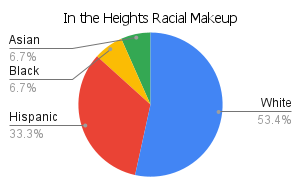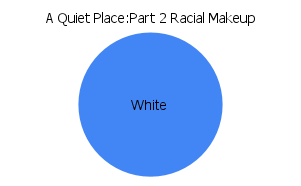The Real Impact: How Has Diversity Affected Film Ratings Over the Years?
Just in the past five years, the film industry has undergone massive changes in the diversity of its workforce. From directors and writers to lead actors and producers, there has been a rise in the number of people of color and women involved in the movie-making process. But while this trend has generally received positive feedback, there appears to be a different story as told through recent movie reviews. By comparing six movies paired by genre from the past five years, we can begin to see the accurate response and impact of diversity in the film industry and where to move on from here.

What Is The Diversity Criteria?
For each film in the genres included (musical, action/superhero, and horror), the cast/crew roles included in the data analysis include director, writer, lead actors, producers, and executive producers. The data is also formatted into the racial categories of White, Black, Hispanic, Asian, and Middle Eastern, and the gender categories of Male and Female. This was all sorted into two separate pie charts for each movie analyzed.
How Does Diversity Affect Ratings for Musicals?
The recent movies In the Heights (2021) and The Prom (2020) have garnered lots of attention. But as told by Rotten Tomatoes’ rating scale, critics have rated the former with a 95% and viewers a 94%, while The Prom received a 55% rating from critics and a 63% rating from viewers.


When comparing these recently released musicals, there are more racial categories represented within In the Heights, with 6.7% of cast/crew roles occupied by Black and Asian individuals, 33.3% of roles occupied by Hispanic individuals, and the remaining 53.4% occupied by White individuals. On the other hand, The Prom, only has a racial distribution of 94% White cast/crew members and 6% Black members.


In terms of gender distribution, In the Heights also has greater diversity: 33% of its cast/crew comprises female members, with a remaining 67% of male members. The Prom has a gender distribution of 23% female members and 77% male members.
How Does Diversity Affect Ratings for Superhero Movies?
Though they have battled each other over the years, both Marvel and DC have released movies in the past 2 years that have received lots of attention: Avengers: Endgame (2020) and Birds of Prey (2020). On Rotten Tomatoes, Avengers: Endgame has received a 94% from critics and a 90% rating from viewers. On the other hand, Birds of Prey received a 79% rating from critics and a 78% rating from viewers.


Though Birds of Prey received a lower rating from both critics and viewers, its racial diversity does outcompete that of Avengers: Endgame; approximately 27% of cast/crew roles were occupied by Asian cast/crew members, while 6.9% of roles were occupied by Hispanic and Black members (in their respective category), and the remaining 59.4% occupied by White members. Avengers: Endgame has a racial distribution of 6.3% Hispanic and Asian individuals and 87.5% Black individuals.


When comparing the gender distribution of both movies, Birds of Prey also displays greater diversity: 47% of its cast/crew comprises female members, with a remaining 53% of male members. Avengers: Endgame has a gender distribution of 12.5% female members and 87.5% male members.
How Does Diversity Affect Ratings for Horror Movies?
Even in the less popular horror genre, there appear to be stark differences in diversity and ratings, some of which may be linked together. A Quiet Place: Part 2 (2020) and The Forever Purge (2021) are the most recent releases in their respective movie series. But each has received very different reviews: Rotten Tomatoes critics have given A Quiet Place: Part 2 a 91%, with viewers giving it a 92%, while critics have alternatively given The Forever Purge a 50% rating, and viewers a 78% rating.


Surprisingly, when comparing the data for racial diversity, A Quiet Place: Part 2 has been found to have a main cast/crew made up of 100% White members, which includes positions such as lead actors and producers. In comparison, The Forever Purge has a racial distribution of 70% White cast/crew members, 23% Hispanic members, and 7% Black members.


Though their racial distributions are vastly different, the movies’ gender distribution seems comparable. 36% of A Quiet Place: Part 2’s cast/crew comprises female members, with male members making up 64%. The Forever Purge has a gender distribution of 30% female members and 70% male members.
What Can We Conclude?
Though large conclusions cannot be made from the general racial/gender diversity analysis of 6 recent films, there are some trends and predictions to be uncovered. These differences in ratings and diversity representation may be due to shifts towards greater diversity in smaller genres, such as musicals, as they do not usually heavily impact box office/movie distributor profits. The ratings given to these films may also differ according to where diversity is allocated within the cast/crew: are the directors and writers people of color? Or are the producers women? The significance of the roles assigned may also depend on the budget allocated to a specific film; films that have greater budgets may only focus on hiring more experienced professionals, most of which have historically been White males. There are various directions in which this data analysis can be taken, but overall, it can hopefully contribute to the general increase of diversity on and behind the big screen.



